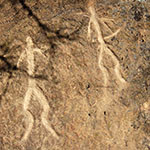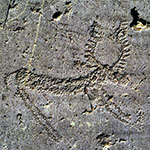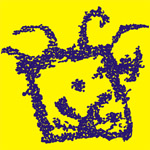The Böyük Daş mountain is one of the three promontories included in the Natural Historical Artistic Reserve of Gobustan. With its terraced profile and big boulders scattered around the different terraces, it preserves thousands of engravings with a very long chronology. Its rock art includes several figurative categories: zoomorph, anthropomorph, boat, symbol. Here is presented a brief guide to visit the Böyük Daş hill, in Gobustan Rock Art Reserve.
Il monte di Böyük Daş è uno dei tre promontori inclusi nella Riserva Naturale Storico-Artistica di Gobustan, Con il uso profilo terrazzato e una serie di grossi massi sparsi lungo le sue terrazze, conserva migliaia di figure incise di cronologia molto ampia e appartenenti a varie categorie figurative: zoomorfi, antropomorfi, imbarcazioni, simboli. Ecco una breve guida per visitare l’area di Böyük Daş, all’interno della Riserva di Arte Rupestre di Gobustan.
by Dario SIGARI [i]





























